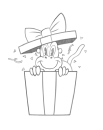$55.25
$65
You save $9.75
LESSON NOTES
Loomis Method – Real-Time Demo
DOWNLOADS
Loomis Method - Real-Time Demo.mp4
1 GB
COMMENTS
Hi Stan,
how do the proportion of hairline, brow, nose chin change for children/toddlers?
I tried to do some of my own after this demo. The likeness and proportions are definitely not there yet, but I do think that I got the understanding of the loomis head in 3/4 view down. Any critique or tips are very welcome!
It was fun and definitely easier than trying to get that 3d model from weird angles.
Looking for feedback.
I followed this video for this drawing. Pretty tough but I know it’ll get easier with a lot of practice. This was my first attempt. I fully plan on doing this again to see how the attempts compare.
•
1yr
Hey there! I think you're off to a good start with your guidelines and construction of the head, it's just mostly the placement of the features that could be tweaked a bit. For the first guideline across the face, you have the brow placement already, but it seems too compressed and close with the eyes, that giving them more space and placing the eyes further down would help. The second guideline will have the nose. The bottom portion seems pretty good with the mouth/jaw proportion, just keep in mind to continue the perspective that the rest of the guidelines follow. Hope this helps! :)
I think I just need to work on the hair more. I was never really good at drawing hair to begin with but I still wanted feedback on how I can improve.
•
1yr
Looking good! You have some solid construction that already gives a good impression of 3-dimensionality. The thing I'd recommend is rounding out the edge furthest from the viewer, as that slight curve better fits the perspective of the rest of the features. With the side of his head visible, and the eyes/nose/mouth facing left, the side of his head furthest away will look smaller as it turns away.
My suspicions have been confirmed. The Loomis method isn’t very effective if you don’t fully understand the planes of the face and facial rhythms.
Drawing the features onto the Loomis guidelines feels like wrapping a gift. It’s 3-dimensional, but we lose the nuances of the face.
I have a question guys will Loomis method work on images like this, I think its a foreshortened image thats why standard ratios might not work. Please suggest.
I can 'see' how to create the portrait from the circle but have no clue when I find an image on the web I would like to copy as to where to place the 'guiding' circle. I have seen post where the circumference embraces the now and other times it touche lips,etc. Is there a guiding rule or just simply draw it over the image and then start placing featues? I am lost on this
I think it is a good decision. You are in the perfect place to learn and get feedback on your work.
It seems simple, but the different possible positions of the head, tilt, lean, perspective, give you a bit of material to study and get used to when drawing circles and ellipses, keeping in mind that these describe 3D object.
One thing is that I would not study the basic construction for very long time, but I would always push myself a little further, like not only drawing the ideal lines where the hair, nose and chin are, but also drawing different head shapes and adding simple lines to describe the position of the eyes or mouth, also a simple shape of the ear, its angle, then position of the neck, angle of the arms etc. Good luck with your studies.
Hi @killzen I agree with Maciek that drawing over photos does benefit in the beginning when it comes to understanding the Loomis method. One thing that helped me was taking into account the tilt of the head; that will help you understand where the circle will need to be placed. Also, it is true that not all the heads fit Loomis, but it will give you a point of reference to make adjustments. Good Luck in your journey. What helps is looking at the thirds on the face.
Maybe it depends on a reference which you found? Maybe in one example the head is angled towards the viewer and in another it is in a different position? It might also depend on how someone drew it, maybe they were a bit inventive or interpreted things a bit differently than you or Loomis would?
Drawing over the picture certainly helps but I would not learn to draw that way, but rather draw by looking at the reference, and then compare with it and find areas where I could improve.
I really like the explanation how Stan draws portraits based on the Loomis method. The Loomis method is rather quite simple once you have studied it, got used to it and practised it a bit, but it does not work for everyone and does not have to work for everyone. For other people/artists it is not intuitive or it is a waste of time or they find the Asaro head, or the Reilly method or just the shape of the head helps them to understand how to start or draw a good portrait. It would be helpful if you could post a reference and we can study it together.
Critiques appreciate my first attempt and the lips are definitely throwing me off. I would love advice!

















